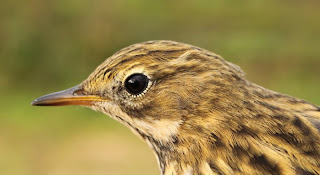Both overnight and early morning rain plus predictions of heavy showers put paid to any mist netting plans. So it was birding only for me this morning and a trudge along the familiar but now saturated fields of Pilling.
I started at Fluke Hall with Sylvia warblers, a loud Lesser Whitethroat, singing again from close to the wood and 8 Common Whitethroats, with at least one pair of the latter feeding young in a nest close to the road. It’s always worth a stop here, if only to clock the Swallows that perch overhead or a listen to all the Tree Sparrows and Linnets hiding in the hedge. Today a Greenfinch sang from the hawthorn and I counted 7 Linnets there too. The Swallows obviously have young in the nest now as they came in from the fields with food.

Lesser Whitethroats are impossible to photograph in the field, at least for me, but here’s a picture of one in the hand and a reminder of that wonderful, flamboyant song. The Lesser Whitethroat song is very far carrying, and in this morning’s still air I could hear the bird from the sea wall 100 yards away. One could be forgiven for thinking that the brash, rattling flourish is the whole of the Lesser Whitethroat song, and it only when close that the initial scratchy Sylvia type part of the song is heard.

I walked out to the sea wall giving my boots and socks a good soaking from the earlier downpours but found 30+ Lapwing plus a welcome surprise, an adult with 3 tiny, newly fledged chicks. I looked in vain for Redshank or Oystercatcher chicks, counting just 8 and 15 adults respectively. Although the Oystercatchers didn’t have young, several of them were still in display mode, flying in pairs above and around me. None of the Redshanks acted as if they had young but hopefully there may be at least a nest or two of Oyks soon. Like elsewhere in the Fylde the Brown Hares are in good numbers here at the moment, with lots of leverets.



A look on the pools at Lane Ends produced 50+ Greylag, single Tufted Duck, 2 Little Grebe, 2 singing Reed Warbler and a singing Reed Bunting. In the plantation were 1 Sparrowhawk making a dash for Blackbirds, 1 Blackcap, 1 Jay and 10+ Blackbirds and a singing Chiffchaff. The Chiffchaff is newly in to the site so I assume it bred or failed elsewhere and is now trying its luck here.

From the top car park I watched a fly-past of 6 Grey Herons heading up towards Cockerham, the largest gathering of Grey Herons I’ve seen for a while - perhaps a prelude to the return of the Little Egrets.

Later I had to dry my socks on the washing line but it was well worth it.











































